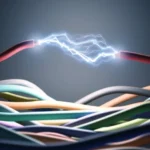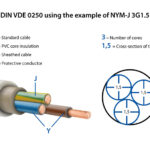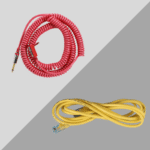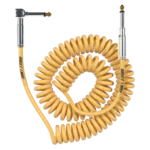As a trusted Instrumentation cables manufacturer, TOT Wire & Cable provides both technical insights and high-quality cables for industrial applications. Instrumentation cables are essential in transmitting low-level electrical signals, measurements, and control data throughout facilities. From process control applications to safety systems, the right instrumentation cable can make the difference between efficient operations and costly downtime. This comprehensive guide explores the various types of instrumentation cables, their specifications, applications, and how to select the appropriate cable for your specific requirements.
What Are Instrumentation Cables?
Instrumentation cables are specialized electrical cables designed to transmit low-level signals between instruments, sensors, controllers, and monitoring equipment in industrial environments. Unlike power cables that carry high voltages and currents, instrumentation cables are engineered to protect weak signals from electromagnetic interference (EMI), radio frequency interference (RFI), and other forms of electrical noise that could compromise data integrity.
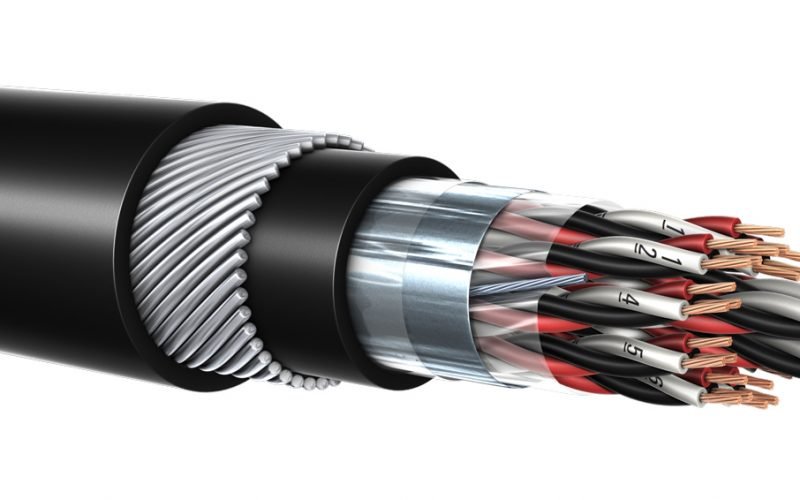
instrumentation cables
Key Types of Instrumentation Cables for Industrial Applications
1. Twisted Pair Instrumentation Cables
Twisted pair instrumentation cables are among the most common types used in industrial settings. The twisted configuration helps cancel out electromagnetic interference and reduces crosstalk between adjacent pairs.
Common variations include:
- Individual Shielded Pairs (ISP): Each pair has its own shield, providing maximum protection against crosstalk between pairs.
- Overall Shielded Pairs (OSP): Multiple twisted pairs within a single overall shield, offering good protection at a lower cost.
- Individual and Overall Shielded Pairs (IOSP): Combines both individual and overall shielding for maximum noise immunity in high-interference environments.
Twisted pair instrumentation cables typically feature AWG sizes ranging from 16 to 24, with 18 AWG being particularly common for most applications.
2. Thermocouple Extension Cables
Thermocouple extension cables are specifically designed to connect thermocouples to control and monitoring equipment. These cables use conductor materials that match the thermocouple type to maintain measurement accuracy.
Common thermocouple cable types include:
- Type J (Iron/Constantan): Suitable for temperatures from 0°C to 750°C
- Type K (Chromel/Alumel): For temperatures ranging from -200°C to 1250°C
- Type T (Copper/Constantan): Ideal for low-temperature applications from -250°C to 350°C
- Type E (Chromel/Constantan): Offers high EMF output for temperatures from -200°C to 900°C
- Type N (Nicrosil/Nisil): Provides stability in high-temperature environments up to 1300°C
These cables feature color-coded insulation that corresponds to international standards for easy identification and proper installation.
3. RTD (Resistance Temperature Detector) Cables
RTD cables connect resistance temperature detectors to monitoring systems. These cables typically feature:
- Tinned or bare copper conductors
- 2, 3, or 4-wire configurations depending on accuracy requirements
- High-quality insulation to maintain signal integrity
- Optional shielding to prevent interference
The 3-wire RTD configuration is most common in industrial applications, offering a good balance between accuracy and cost-effectiveness by compensating for lead wire resistance.
4. Coaxial Instrumentation Cables
Coaxial instrumentation cables feature a central conductor surrounded by an insulating layer and an outer conductive shield. They're commonly used for:
- High-frequency signal transmission
- Video monitoring systems
- RF (radio frequency) applications
- Certain types of level and flow sensors
The characteristic impedance of these cables (typically 50, 75, or 93 ohms) must match the connected equipment to prevent signal reflection and loss.
5. Multi-Conductor Control and Instrumentation Cables
Multi-conductor cables combine multiple insulated conductors within a single jacket, allowing for the transmission of several signals through one cable. These are often used in:
- PLC (Programmable Logic Controller) connections
- Complex control systems
- Multiple sensor arrays
- SCADA (Supervisory Control and Data Acquisition) systems
These cables typically feature color-coded or numbered insulation for easy conductor identification during installation and maintenance.
6. Fieldbus and Industrial Network Cables
As industrial automation continues to advance, fieldbus and network-specific instrumentation cables have become increasingly important. These include:
- PROFIBUS cables: For PROFIBUS DP and PA networks
- Foundation Fieldbus cables: Meeting IEC 61158-2 standards
- HART communication cables: Supporting Highway Addressable Remote Transducer protocol
- Modbus cables: For traditional Modbus networks
- DeviceNet cables: Featuring specific impedance and capacitance characteristics
- Industrial Ethernet cables: Including Category 5e, 6, and 6A variants designed for harsh environments
These specialized cables must meet strict electrical parameters to ensure proper network performance and reliability.
Key Construction Elements of Instrumentation Cables
Understanding the construction elements of instrumentation cables is essential for selecting the right product for your application:
Conductors
- Material: Typically copper or copper-alloy for most applications; special alloys for thermocouple cables
- Stranded vs. Solid: Stranded conductors offer better flexibility, while solid conductors provide better electrical characteristics
- Size: Usually specified in AWG (American Wire Gauge), with common sizes being 16-24 AWG
Insulation
- PVC: Cost-effective for general purpose applications
- XLPE: Offers better temperature and chemical resistance
- FEP/PTFE: For high-temperature environments up to 200°C
- Polyolefin: Low smoke and zero halogen options for safety-critical installations
Shielding
- Aluminum/Polyester Foil: Provides effective protection against high-frequency interference
- Braided Shield: Typically made of tinned copper, offers better mechanical protection and flexibility
- Combination Shields: Both foil and braid for maximum protection
- Unshielded: For applications where EMI/RFI is not a concern
Jacket Materials
- PVC: Most common, offering good general protection
- PE (Polyethylene): Better performance in wet conditions
- TPE (Thermoplastic Elastomer): Enhanced flexibility and oil resistance
- LSZH (Low Smoke Zero Halogen): For areas where toxic gas emissions during fire are a concern
- FRNC (Flame Retardant Non-Corrosive): Meeting stringent safety standards
Application-Specific Instrumentation Cables
Different industries and environments require specialized instrumentation cables:
Hazardous Area Instrumentation Cables
For oil and gas, chemical processing, and other hazardous locations, instrumentation cables must meet specific standards:
- Armored Cables: Featuring steel wire or tape armor for mechanical protection
- Intrinsically Safe Cables: Designed for use with intrinsically safe instrumentation systems
- ATEX/IECEx Compliant: Meeting international standards for explosive atmospheres
Marine and Offshore Instrumentation Cables
Marine applications require cables that can withstand unique challenges:
- Halogen-Free: To reduce toxic smoke in confined spaces
- UV and Salt-Water Resistant: For topside applications
- Mud-Resistant: For subsea and drilling applications
- DNV-GL Certified: Meeting maritime safety standards
High-Temperature Instrumentation Cables
For furnaces, kilns, and other high-temperature environments:
- Fiberglass Insulation: For temperatures up to 400°C
- Mineral Insulated: Using magnesium oxide insulation for extreme temperatures up to 1000°C
- Ceramic Fiber: For specialized high-temperature applications
Direct Burial Instrumentation Cables
For underground installations:
- PE/XLPE Jackets: Resistant to moisture and chemicals in soil
- Flooding Compounds: To prevent water migration
- Rodent-Resistant Options: With additional mechanical protection
Selecting the Right Instrumentation Cable
When choosing instrumentation cables for your application, consider these critical factors:
- Signal Type: Analog, digital, thermocouple, RTD, or network
- Environmental Conditions: Temperature, moisture, chemical exposure, UV exposure
- Mechanical Requirements: Flexibility, abrasion resistance, tensile strength
- Electrical Requirements: Voltage rating, capacitance, impedance
- EMI/RFI Protection Needs: Level of shielding required
- Regulatory Compliance: Industry-specific standards and certifications
- Installation Method: Fixed, flexible, continuous flexing, or drag chain
- Life Expectancy: Expected service life in the specific application
TOT offers a full range of instrumentation cables, available in various constructions such as armored, shielded, and multi-pair.
Industry Standards for Instrumentation Cables
Instrumentation cables must conform to various standards depending on their application:
- IEC 60751: For RTD cables
- IEC 60584: For thermocouple cables
- IEC 61158: For fieldbus cables
- UL 13: General instrumentation cable requirements in North America
- IEC 60092-376: For shipboard instrumentation cables
- API RP 551: Recommended practice for process measurement instrumentation
Troubleshooting Common Instrumentation Cable Issues
Understanding common failure modes can help prevent issues:
- Signal Degradation: Often caused by EMI/RFI interference, requiring better shielding
- Moisture Ingress: Leading to increased capacitance and potential shorts
- Mechanical Damage: From excessive pulling tension, bending, or abrasion
- Temperature-Related Failures: When cables are used outside their temperature rating
- Chemical Attack: Resulting in jacket or insulation breakdown
Future Trends in Instrumentation Cabling
The field of instrumentation cables continues to evolve:
- Increased Digitalization: Moving toward digital signal transmission and industrial Ethernet
- Fiber Optic Integration: Combining traditional copper with fiber for hybrid solutions
- Enhanced Fire Performance: Development of cables with improved fire resistance and reduced smoke emissions
- IoT Compatibility: Cables designed specifically for Internet of Things sensors and networks
- Sustainable Materials: Eco-friendly cable components with reduced environmental impact
Conclusion: Choosing the Right Instrumentation Cable for Your Application
Selecting the appropriate instrumentation cable is crucial for ensuring reliable system performance, accurate measurements, and safe operations. By understanding the different types of instrumentation cables and their specific characteristics, you can make informed decisions that will optimize your industrial processes and minimize downtime.
When in doubt, consult with cable manufacturers or qualified electrical engineers who can provide guidance based on your specific application requirements. Remember that while higher-quality instrumentation cables may represent a larger initial investment, they often deliver superior performance and longer service life, resulting in better long-term value and system reliability.
Whether you're designing a new facility, upgrading existing systems, or troubleshooting performance issues, a thorough understanding of instrumentation cable types and specifications will help ensure successful implementation and operation of your industrial control and monitoring systems.
 What are the most trusted instrumentation cable manufacturers?
What are the most trusted instrumentation cable manufacturers?
A: Leading manufacturers include TOT Wire & Cable, Belden, Prysmian, and Nexans. TOT offers a wide range of high-performance cables tailored for control and signal applications in harsh environments.
Looking for Reliable Instrumentation Cable Manufacturers?
At TOT Wire & Cable, we not only provide in-depth knowledge about instrumentation cables but also manufacture and supply high-quality instrumentation cables for a wide range of industrial applications. With strict quality control, competitive pricing, and fast delivery, TOT is trusted by clients in oil & gas, chemical, and automation sectors.


 What are the most trusted instrumentation cable manufacturers?
What are the most trusted instrumentation cable manufacturers?